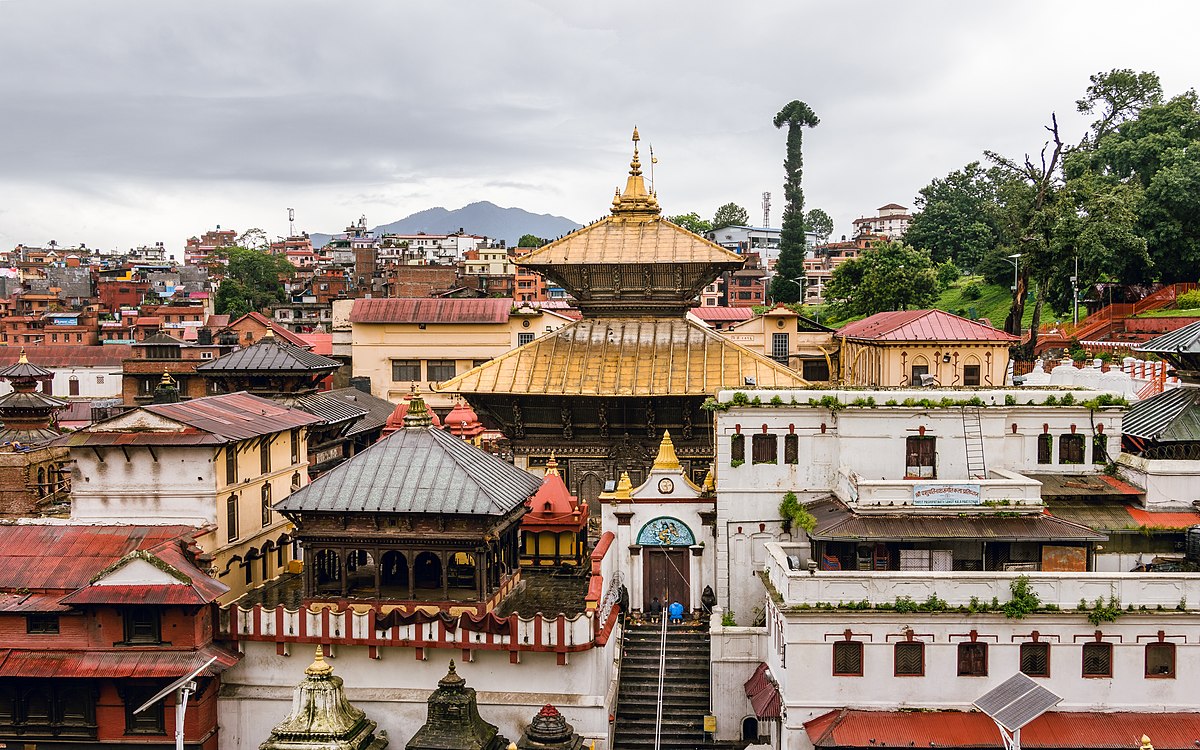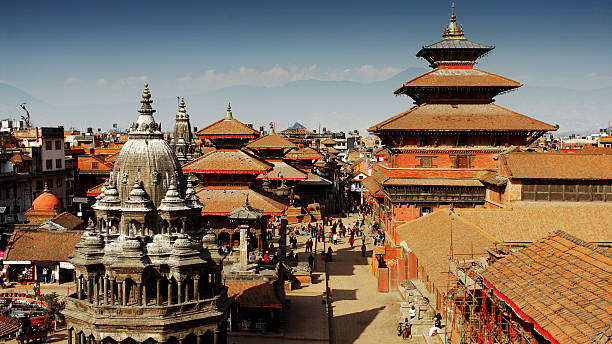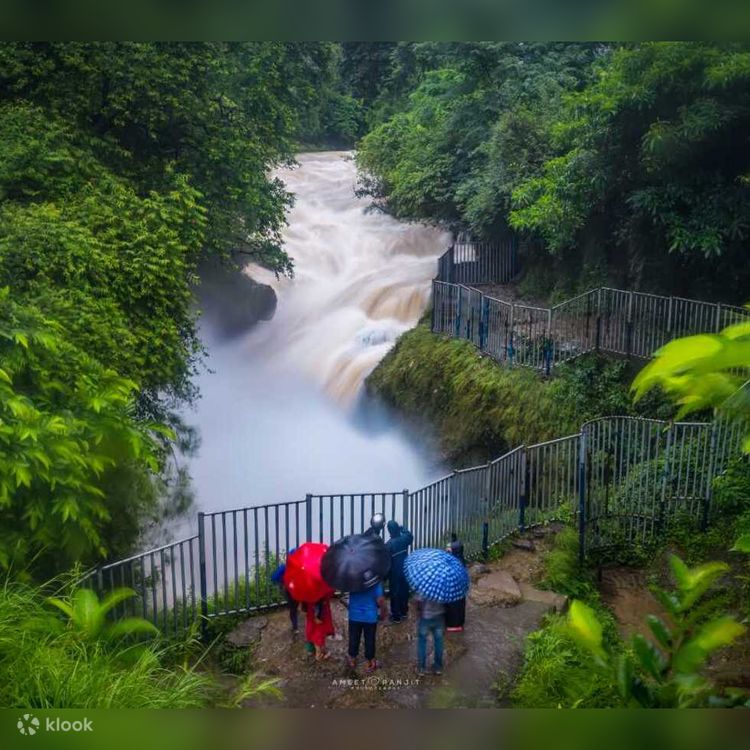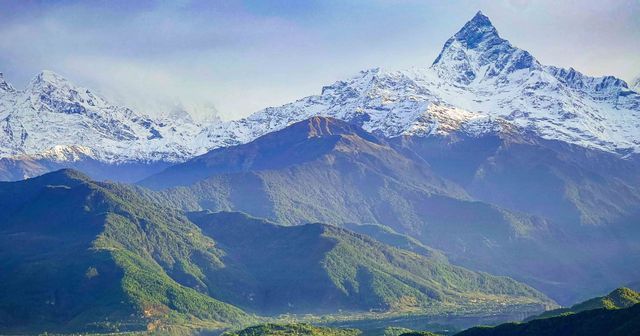Starting a journey from Gorakhpur to Nepal opens the door to an unforgettable experience filled with natural beauty, spiritual depth, and cultural richness. This thoughtfully crafted tour package offers travelers the chance to explore two of South Asia’s most fascinating and diverse destinations – the tranquil city of Pokhara and the historically vibrant capital, Kathmandu.
In Pokhara, you'll be captivated by the breathtaking views of the Annapurna mountain range, the peaceful waters of Phewa Lake, and thrilling adventure activities like paragliding and boating. The serene environment makes it a perfect retreat for nature lovers and those seeking relaxation amidst the hills.
Meanwhile, Kathmandu invites you into a world of ancient temples, sacred stupas, and bustling local markets. With UNESCO World Heritage Sites like Swayambhunath Stupa, Pashupatinath Temple, and Kathmandu Durbar Square, the city offers a deep dive into Nepal’s spiritual and cultural heritage.
Whether you're an adrenaline junkie, a history buff, or someone yearning for peace and scenic beauty, this Gorakhpur to Nepal tour itinerary ensures a truly immersive and rewarding travel experience that will leave you with memories to last a lifetime.

Pashupatinath Temple is one of the most revered Hindu temples, located along the banks of the holy Bagmati River in Kathmandu, Nepal. Dedicated to Lord Shiva, this sacred site draws thousands of devotees daily who come to offer prayers and seek divine blessings.
The temple holds immense spiritual significance, especially during major Hindu festivals such as Maha Shivaratri, Bala Chaturthi, and Teej. On these occasions, over a million devotees visit the temple to participate in rituals and celebrations. Teej, in particular, is one of the most important festivals celebrated at Pashupatinath, during which Hindu Nepali women observe fasts and pray for the long life and happiness of their husbands.
During these festivals, the temple is beautifully decorated with lights, flowers, and garlands, creating a magical and spiritual ambiance. Recognized for its cultural and historical importance, Pashupatinath Temple was declared a UNESCO World Heritage Site in 1979.

Kathmandu Durbar Square, also known as Hanuman Dhoka Durbar Square, is a historic palace complex situated in the heart of Kathmandu, Nepal. Once the royal residence of the Malla kings and later the Shah dynasty, this UNESCO World Heritage Site is a magnificent example of traditional Newari architecture, ancient craftsmanship, and cultural heritage.The square is home to several courtyards, palaces, temples, and shrines, some dating back to the 12th century. Key attractions include the Hanuman Dhoka Palace, Taleju Temple, Kumari Ghar (Home of the Living Goddess), and the intricately carved Kasthamandap, believed to be built from a single tree.Kathmandu Durbar Square is not just an architectural wonder but also a center of vibrant culture. Festivals like Indra Jatra and Dashain are celebrated here with grand processions and rituals, drawing both locals and tourists alike.
Despite the damage caused by the 2015 earthquake, many structures have been restored or are under renovation, preserving the essence of Nepal's regal past. A visit to this square is like stepping back in time, offering a glimpse into the glorious history and spiritual traditions of the Kathmandu Valley.
 Highlights
Highlights
Hanuman Dhoka Palace – Historic royal palace of Malla and Shah kings.
Kumari Ghar – Home of the Living Goddess, Kumari.
Taleju Temple – Tallest and most sacred temple in the square.
Kasthamandap – Ancient structure made from a single tree; origin of Kathmandu's name.
Jagannath Temple – Famous for its detailed erotic carvings.
King Pratap Malla Statue – Historic multilingual inscription and statue.
Located in the bustling Thamel area of Kathmandu, the Garden of Dreams (also known as Swapna Bagaicha) is a beautifully restored neo-classical garden that offers a peaceful escape from the city's chaos. Originally built in the 1920s by Field Marshal Kaiser Shumsher Rana, the garden was inspired by Edwardian design and features pavilions, fountains, ponds, pergolas, and manicured lawns.Spread across 6,895 square meters, the garden is adorned with elegant architecture and six pavilions representing Nepal’s six seasons. It's a favorite spot for locals and tourists alike to relax, read, meditate, or enjoy a quiet stroll amidst nature.The garden also houses a café and a small museum, making it a perfect place for both leisure and learning. Whether you're seeking solitude or a romantic setting, the Garden of Dreams lives up to its name—offering serenity, beauty, and inspiration.
 Highlights
HighlightsLocated in Thamel, Kathmandu – Easy access in the city center.
Built in the 1920s – Created by Field Marshal Kaiser Shumsher Rana.
Neo-classical European design – Inspired by Edwardian gardens.
Six Pavilions – Represent Nepal’s six seasons.

Also known as Swayambhu or Swayambhunath Maha Chaitya, this ancient religious site is one of the most significant spiritual landmarks in Kathmandu. The name "Swayambhunath" translates to "the self-existent one" or "self-created," reflecting its deep-rooted spiritual importance, especially among Buddhist pilgrims.
Considered one of the oldest and most sacred Buddhist shrines in Nepal, the temple complex is surrounded by lush greenery and a variety of trees, creating a peaceful and serene atmosphere. The site features a majestic stupa, numerous smaller temples and shrines, a monastery, a museum, and a well-stocked library.
Swayambhunath is often referred to as the "Monkey Temple" due to the large population of monkeys that roam freely around the area. While these monkeys are a popular attraction, visitors are advised to be cautious.
The stupa is accessible via two main routes: a steep stairway of 365 steps from the eastern side, leading straight to the main platform, or a winding road from the south side, which provides vehicle access to the southwest entrance.
Phewa Lake (also spelled Fewa Lake) is the most iconic and picturesque lake in Pokhara, and a must-visit destination for every traveler. Surrounded by lush hills and offering reflections of the majestic Machhapuchhre (Fishtail) and Annapurna mountain ranges, the lake is perfect for boating, kayaking, and peaceful lakeside strolls. As the sun rises and sets, the calm waters of the lake glow with golden hues, creating postcard-perfect views.
Floating peacefully in the center of Phewa Lake is the beautiful Tal Barahi Temple, also known as Barahi Mandir. This two-story pagoda-style Hindu temple is dedicated to Goddess Barahi, believed to be a manifestation of Goddess Durga. The temple is accessible only by boat, adding to the charm and spiritual ambiance of the visit. It's a popular site for both religious pilgrims and tourists who seek a tranquil experience on the water.

The World Peace Pagoda, also known as Shanti Stupa, is one of Pokhara's most peaceful and scenic landmarks. Located atop a hill on the southern side of Phewa Lake, this dazzling white Buddhist stupa was built by Japanese monks as a symbol of peace and unity. It is one of several peace pagodas built around the world to promote global harmony.
The stupa offers breathtaking 360-degree panoramic views of the Pokhara Valley, including Phewa Lake, Pokhara city, and the towering peaks of the Annapurna and Machhapuchhre (Fishtail) ranges. The climb or drive to the top is rewarding, with tranquil surroundings, prayer flags fluttering in the breeze, and an atmosphere of spiritual calm.
Visitors often hike or take a boat across Phewa Lake and then ascend the stone steps to reach the pagoda. Whether you’re a peace seeker, nature lover, or photographer, the World Peace Pagoda is an ideal spot to reflect, relax, and enjoy the serene beauty of Pokhara.
 Highlights
Highlights
Symbol of Peace: Built by Japanese monks to promote world peace and unity.
Stunning Hilltop Location: Offers a peaceful environment above Phewa Lake.
Panoramic Views: Enjoy breathtaking views of the Annapurna range, Pokhara Valley, and Phewa Lake.
Beautiful Architecture: Striking white stupa with golden statues of Buddha from different countries.
Popular Hiking Spot: Accessible by a short hike or drive; many visitors combine it with a boat ride across Phewa Lake.

Davis Falls (locally known as Patale Chhango) is one of the most unique and mysterious waterfalls in Pokhara. Unlike typical waterfalls, Davis Falls plunges into a deep underground tunnel with no visible outlet, creating a dramatic and captivating sight. The fall is at its most powerful during the monsoon season, when water from Phewa Lake overflows into the stream.
Right across the road from Davis Falls is the sacred Gupteshwor Mahadev Cave, one of the longest caves in Nepal. This limestone cave houses a revered Shiva Lingam, attracting Hindu pilgrims and curious tourists alike. As you go deeper, you can hear the roar of Davis Falls from beneath and see where the waterfall continues its journey underground through the cave.
Together, these two attractions offer a perfect blend of natural wonder and spiritual significance, making them a must-visit in Pokhara.
 Highlights
HighlightsDavis Falls: Underground waterfall disappearing into a mysterious tunnel.
Gupteshwor Mahadev Cave: Sacred cave temple with a natural Shiva Lingam.
Unique Experience: Feel the thunder of the waterfall from inside the cave.
Convenient Location: Both sites are right across from each other.
Great for Photography & Exploration.

Sarangkot is a popular hilltop destination just a short drive from Pokhara, known for offering some of the most breathtaking sunrise views in Nepal. As the first rays of sunlight touch the snow-capped peaks of the Annapurna, Dhaulagiri, and Machhapuchhre (Fishtail) mountains, the landscape transforms into a golden masterpiece — a truly magical experience for nature lovers and photographers.
Apart from being a sunrise viewpoint, Sarangkot is also a global hotspot for paragliding. Soaring above the Pokhara Valley, gliding alongside eagles, and floating over Phewa Lake with the Himalayas in the background is an unforgettable thrill for adventure seekers.
Whether you’re visiting for the peaceful morning views or the adrenaline rush of flying through the sky, Sarangkot perfectly blends natural beauty and adventure, making it a must-visit on your Pokhara trip.
 Highlights
HighlightsMesmerizing Sunrise Views over the Himalayan range.
Paragliding Hub – One of the world’s best paragliding locations.
Himalayan Panorama – Close-up views of Annapurna, Dhaulagiri & Machhapuchhre.
Ideal for Photography & Nature Walks.
Easily Accessible – About 30–45 minutes from Pokhara city center.
Whether you’re an adventure lover, a spiritual seeker, or a cultural explorer, this tour promises unforgettable memories at every turn. With smooth connectivity from Gorakhpur, well-planned itineraries, and comfortable accommodations, it’s never been easier to experience the wonders of Nepal.
So pack your bags, book your package, and get ready to discover the magic that awaits just across the border!
